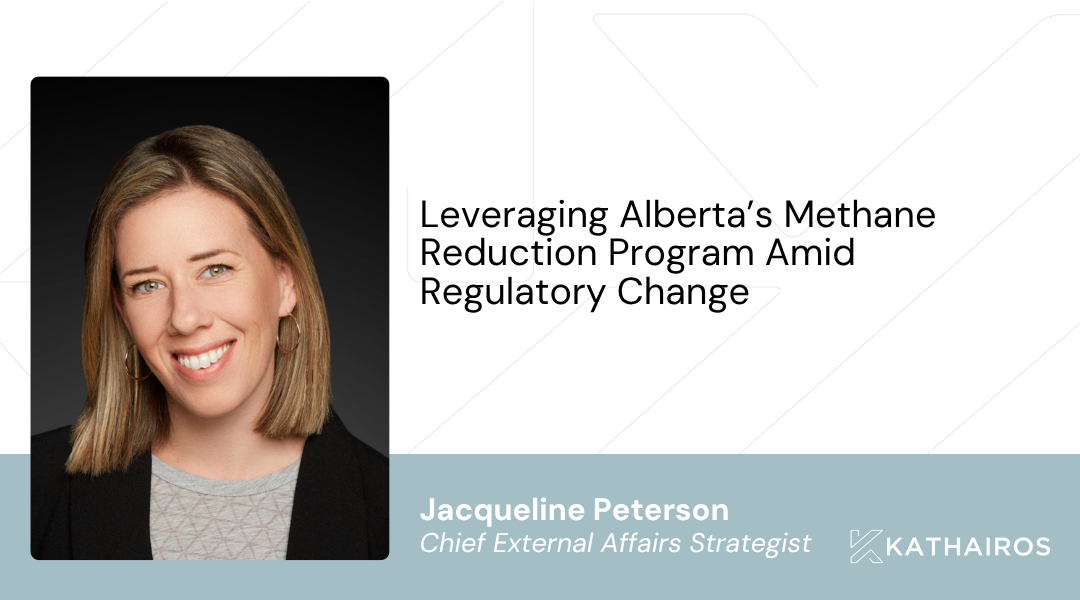
Kathairos has emerged as the leading North American solution for methane elimination from pneumatics, with more than 2,400 systems in operation across North America and over 70 major oil and gas producer partners.
In this post
When you talk about climate change, chances are that carbon dioxide (CO2) and methane (CH4) will both come up as two of the most potent greenhouse gases.
Understanding where they come from, what makes them different from one another, and how their unique effects and characteristics shape our planet’s future will be critical in developing an actual plan to reduce our climate impact.
Carbon Dioxide: The Head Honcho
Carbon dioxide is undoubtedly the most well-known and prevalent greenhouse gas, responsible for approximately 76% of the human-caused global warming effect.
It is primarily released through human activities such as burning fossil fuels, deforestation, and industrial processes. Carbon dioxide has a long lifetime and can remain in the atmosphere for centuries to thousands of years. This extended lifespan makes it a particularly challenging gas to manage and mitigate.
Methane: Powerful But Fleeting
While carbon dioxide receives the lion's share of attention, methane is a potent greenhouse gas in its own right. Methane is emitted during the production and transport of coal, oil, and gas. It is also released by livestock and other agricultural practices, as well as through the decay of organic waste in landfills.
The Global Warming Potential (GWP) of methane is significantly higher than that of carbon dioxide over a 20-year timeframe, meaning that it has a much stronger warming effect in the short term. However, methane has a relatively short lifespan in the atmosphere, with an average of around 12 years.
The Where of It All
Understanding the sources of these greenhouse gases helps to reveal their roles in the climate system and can identify areas where innovative emissions reduction solutions need to be developed, implemented, and fine-tuned.
Carbon dioxide is primarily emitted through the burning of fossil fuels for energy, leading to increased atmospheric concentrations and contributing to long-term warming. Additionally, land-use changes such as deforestation and degradation release CO2 stored in forests and soils, further exacerbating the problem.
Methane, on the other hand, stems from various sources. The largest contributors include agricultural activities, specifically livestock husbandry and rice cultivation, as well as the extraction and transport of fossil fuels. Other sources include landfills and the decay of organic matter in natural wetlands.
While methane emissions are less abundant than CO2 emissions, their impact on warming is disproportionately high.
Implications for Climate Change
As greenhouse gases, both carbon dioxide and methane play significant roles in driving global warming. Understanding their specific impacts on the climate system is crucial in finding ways to best address and mitigate their effects.
Carbon dioxide's long lifespan and high concentration make it a potent driver of climate change over the long term. The cumulative emissions of CO2 that have built up over centuries continue to trap heat, leading to increased global temperatures and consequential impacts such as rising sea levels, melting glaciers, and altered weather patterns.
Methane, while present in smaller concentrations, is approximately 28 times more effective at trapping heat in the atmosphere than carbon dioxide over a 100-year period. The short atmospheric lifespan of methane means that reductions in emissions can have more immediate benefits for mitigating climate change.
In other words: efforts to reduce methane emissions could make substantial contributions to cooling the planet in the near future.
Addressing the Challenges: Mitigation Strategies
The complexities surrounding carbon dioxide and methane emissions require tailored approaches to mitigate their impact.
For carbon dioxide, reduction strategies focus primarily on transitioning to carbon neutral practices, improving energy efficiency, and implementing carbon capture and storage technologies. These initiatives aim to limit the release of carbon dioxide into the atmosphere and capture it before it is emitted.
Methane mitigation efforts are multifaceted. Targeting emissions from key sectors such as agriculture, waste management, and energy production is crucial. Reducing methane emissions from livestock can involve dietary adjustments for animals or changes to manure management practices. Curbing emissions from landfills and promoting responsible waste management can also contribute to methane reduction. In the energy sector, reducing methane leakage from oil and gas infrastructure is a top priority.
The Bottom Line
Carbon dioxide and methane differ significantly as greenhouse gases, both in terms of their sources and their impact on climate change. Carbon dioxide is the primary driver of long-term warming due to its long atmospheric lifetime and high concentration. Methane, while less abundant, has a significantly higher warming potential over a shorter timeframe.
Understanding these differences enables us to develop targeted mitigation strategies to effectively address climate change. Moving forward, a balanced approach that targets carbon dioxide emissions while also addressing methane reduction is essential for mitigating the impacts of global warming.
With concerted efforts to reduce greenhouse gas emissions, both in terms of energy production and agricultural practices, we can work towards a more sustainable future. By considering the unique characteristics of carbon dioxide and methane and their implications for climate change, we take a step closer to informed decision-making and paving the way for a better planet.
About Kathairos Solutions
At Kathairos, our name means 'clean air.' We are proud to champion imperative technologies that support today's evolving energy industry, and the people and producers working tirelessly toward a cleaner, greener barrel. Through our revolutionary liquid nitrogen-powered field technologies and world-class carbon accounting tools, we're on a mission to eliminate methane emissions from more than 450,000 remote well sites across North America. Learn more at kathairos.com.

.png)

